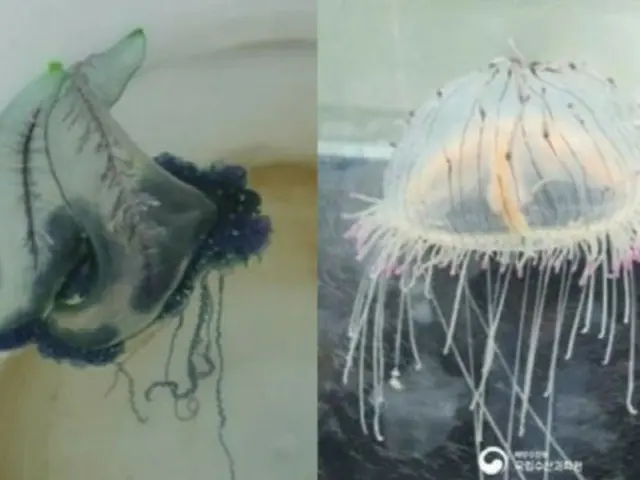A total of 196 cases of jellyfish stings were reported, of which 185 occurred in the four days from the 19th to the 23rd.
The sudden increase in jellyfish encounters has put Gangwon Province in a state of emergency.
A total of 45 cases of contact with jellyfish occurred, but this year there have been dozens of them every day. On the 19th, a lifeguard at a beach in Goseong was caught in a jellyfish while trying to chase it away with a net.
There have also been incidents of people being stung. In response, Goseong County has restricted entry to some beaches where large numbers of jellyfish have appeared. The jellyfish that have appeared on the east coast are Nomura's jellyfish, which come from off the coast of China. 1
The Nomura's jellyfish, which can grow up to 2m in size and float in the ocean, is one of the most poisonous jellyfish, and if you are stung, your skin will swell and you will feel a burning pain. In 2012, an 8-year-old child was stung by a jellyfish.
In some cases, people have died. To prevent accidents involving contact with jellyfish, it is a good idea to minimize skin exposure and wear swimwear that covers the body, such as a rash guard. If you are stung by a jellyfish,
They must wash their skin with seawater instead of water, and use chopsticks to remove the tentacles that have pierced their skin. Gangwon Province is considering installing nets around the beach. Gangneung City is sending out boats to the sea.
The plan is to catch jellyfish above.
2024/07/24 09:54 KST
Copyrights(C) Edaily wowkorea.jp 88

